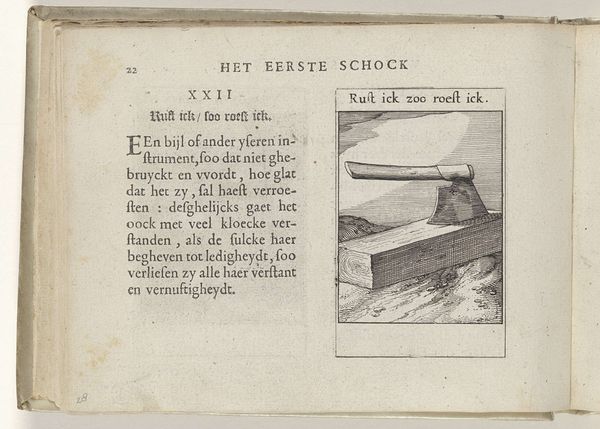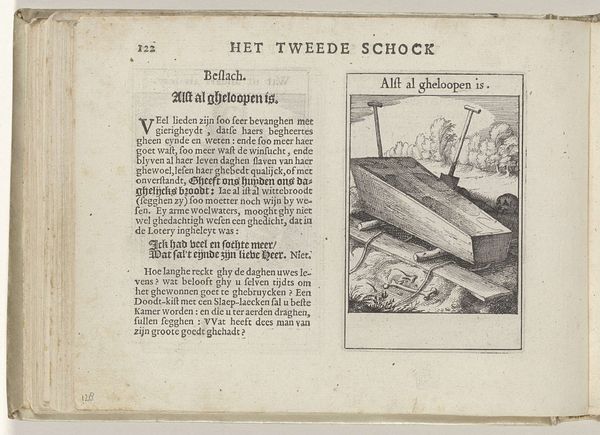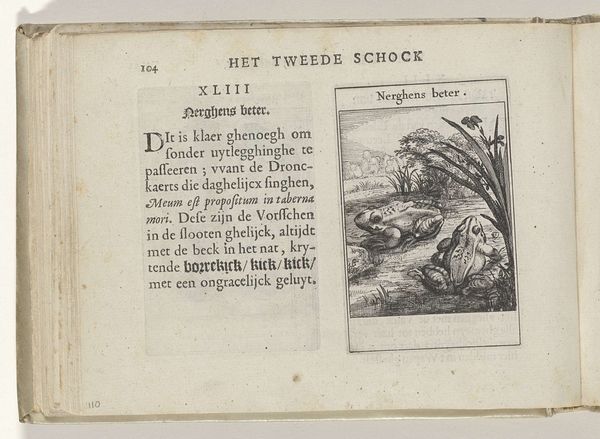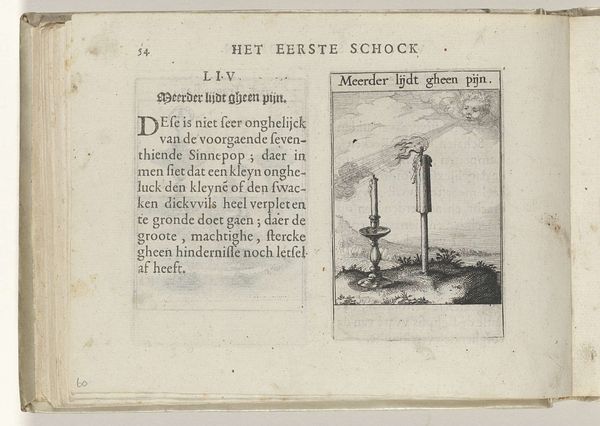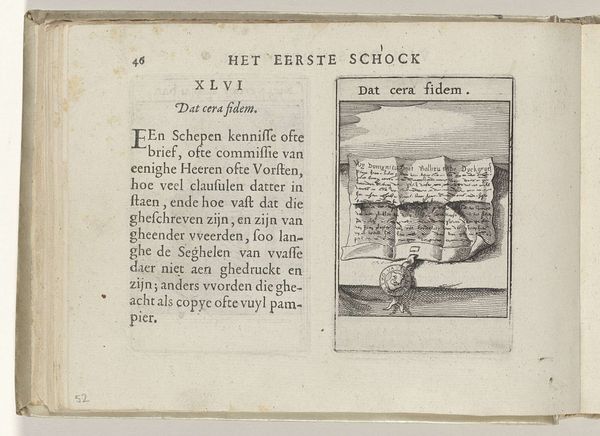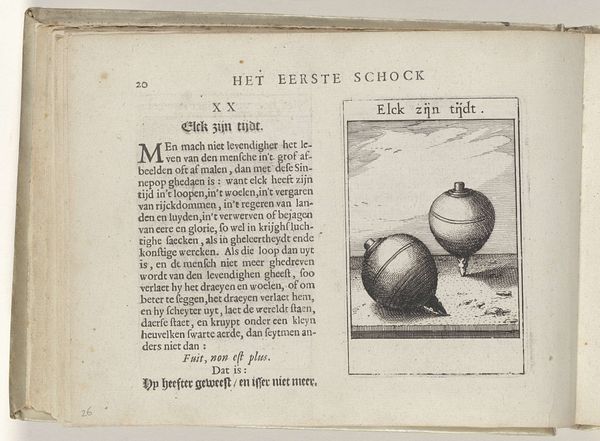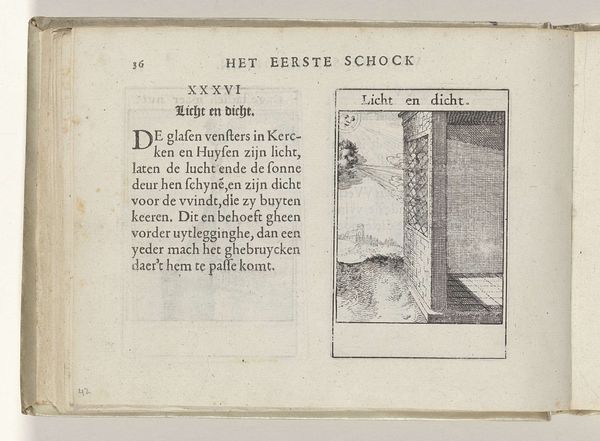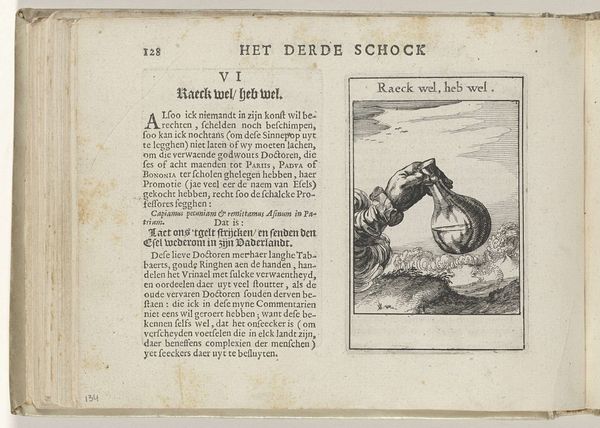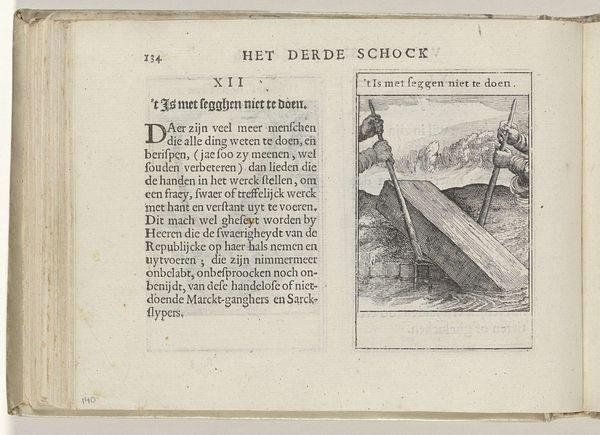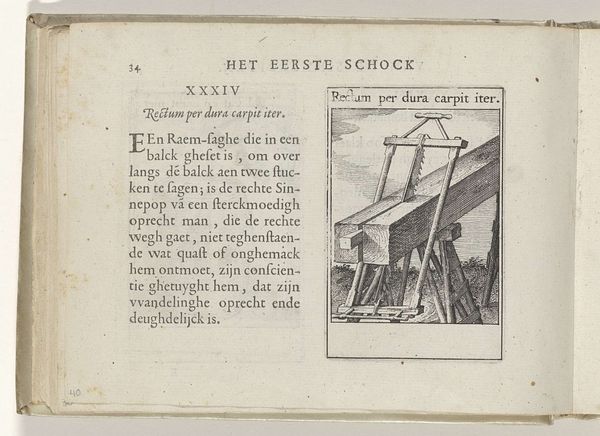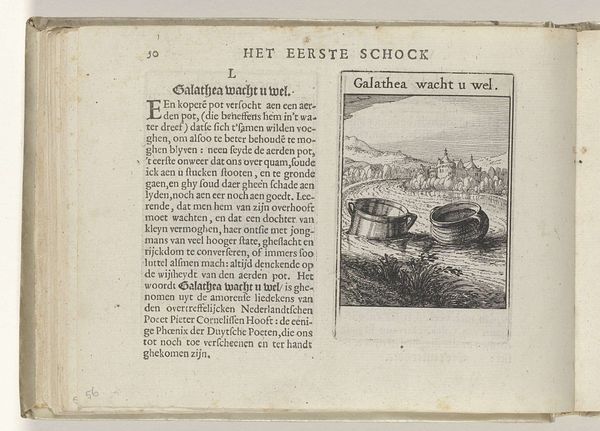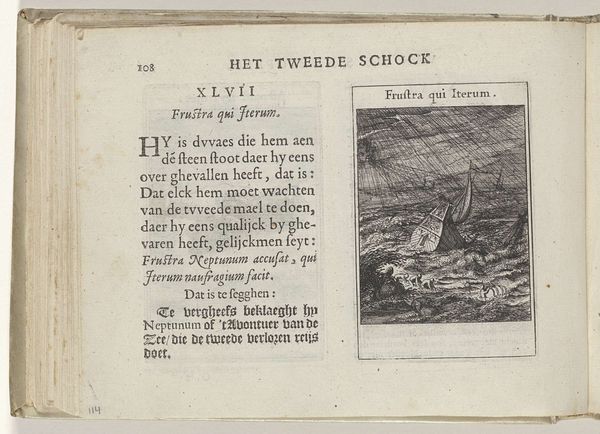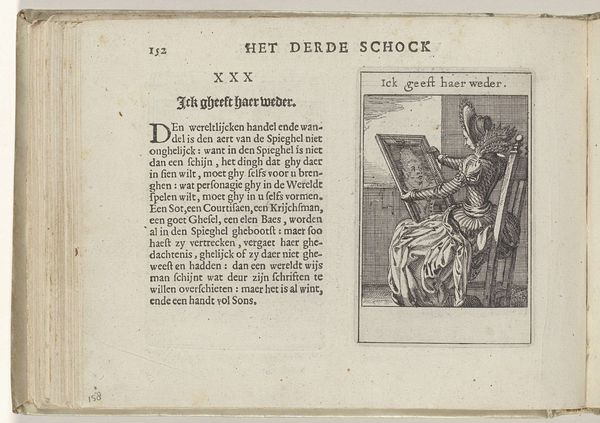
drawing, print, engraving
#
drawing
#
narrative-art
#
dutch-golden-age
#
ink paper printed
# print
#
engraving
Dimensions: height 137 mm, width 188 mm, height 95 mm, width 60 mm
Copyright: Rijks Museum: Open Domain
This emblem, whose author is Roemer Visscher, was made with engraving in around 1614, in the Netherlands. It is titled "Tis een arm muijs, die maer een hol heeft", which translates to "It is a poor mouse that has but one hole". What's interesting here is the way Visscher uses the visual language of emblems, popular in the Dutch Golden Age, to communicate moral and philosophical ideas. Emblems combine images, texts, and mottoes to convey complex meanings. In this case, the image of a floating fortress with a cannon firing can be interpreted as a warning about the dangers of relying on a single solution or strategy. In a society shaped by trade, exploration, and political upheaval, Visscher’s emblem encourages a pragmatic and resourceful approach to life. To fully understand this artwork, a historian might want to look into the wider context of emblem books, Dutch proverbs, and the political history of the period. In this way, we can better understand how art reflects the ideas and concerns of its time.
Comments
No comments
Be the first to comment and join the conversation on the ultimate creative platform.
